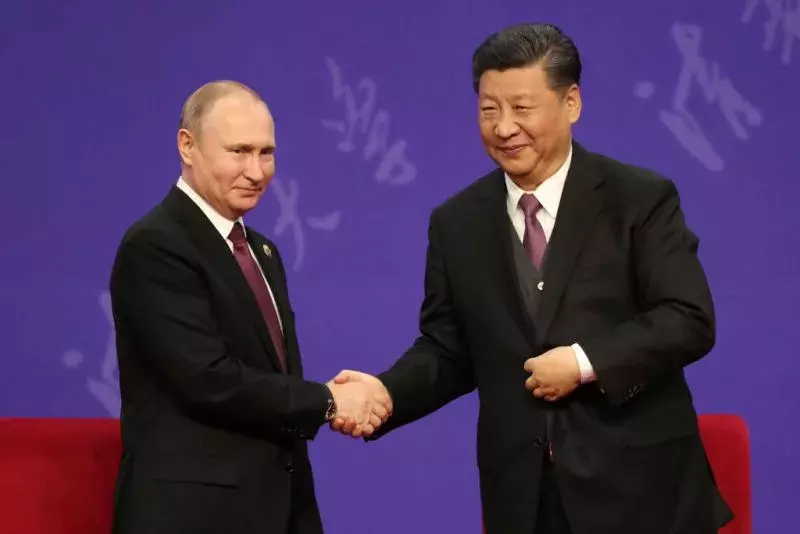Error message

By Lora Saalman
HONOLULU (14 April 2020)—Artificial intelligence (AI) is an increasingly important component of weapons systems, with both positive and negative implications for nuclear deterrence. Integration of AI into military platforms has the potential to allow weaker nuclear-armed states to reset the imbalance of power, but at the same time it exacerbates fears that stronger states may further solidify their dominance and engage in more provocative actions.
China, Russia, and the US are all engaged in developing and integrating AI applications into their military modernization programs. These applications include machine learning, neural networks, and autonomy that feature in Command, Control, Communications, Computers, Intelligence, Surveillance, and Reconnaissance (C4ISR) systems. They also include the deployment of unmanned weapons-delivery and defense platforms.
AI has both defensive and offensive applications
At the defensive level, AI has a strong allure for countries that have less capable early-warning systems and smaller and weaker nuclear and conventional arsenals. Machines have the capacity to make decisions based on objective criteria, avoiding the pitfalls of human error, and they can provide faster anticipation and response to an incoming attack. These capabilities are compelling for countries such as China and Russia that have concerns about deficiencies in their early-warning capabilities in the face of improving US capacity to mount high-precision, stealthy, and swift attacks.
At the offensive level, Russia, China, and the US are all developing unmanned platforms with varying levels of AI integration and autonomy that can be used to deploy nuclear or conventional weapons. These unmanned platforms include underwater vehicles, combat aerial vehicles, and spaceplanes. One risk is that such platforms could potentially select and engage targets without meaningful human control. The three countries’ differing—and at times contradictory—definitions of what constitutes a lethal autonomous weapon system (LAWS) impede consensus on how to avoid such risks.
Roles are shifting
The US remains one of the largest drivers of AI and nuclear trends. In part this is because the US system is relatively transparent, thereby eliciting countermeasures and imitation. It also stems from the history of US military deployments in East Asia and elsewhere.
US development of unmanned combat aerial and underwater vehicles, as well as spaceplanes, has raised the attention of Russia and China, given their longstanding concerns over US attempts to gain an absolute strategic advantage. Not surprisingly, both Russia and China have engaged in similar, and in some cases more expansive and unpredictable, AI-driven weapons developments and deployments of their own.
The Chinese military has been leveraging AI research and development in private industry and universities under “military-civil fusion” (军民融合), with a focus on autonomous decision-making, early-warning, guidance, and targeting systems optimized by machine learning. China has also worked to integrate neural networks that can enhance the maneuverability of its hypersonic glide vehicles and unmanned underwater and aerial vehicles. These are currently thought to be platforms for conventional weapons, but they could serve as AI-enabled nuclear platforms in the future.
While Russia was late in releasing its national AI strategy, it has made strides in developing and testing a suite of AI-enabled platforms and gearing them toward nuclear delivery. These include an AI-equipped missile-carrying bomber, hypersonic glide vehicles that can deliver both nuclear and conventional payloads, and a nuclear-powered unmanned underwater vehicle that will reportedly carry a nuclear weapon. Unlike China that has hedged on the ultimate payload of its platforms, Russia has been much more explicit about its intention to use these systems for nuclear weapons.
Such Chinese and Russian advances have overturned the traditional view that these two countries are simply responding to the US. As revealed by the 2018 US Nuclear Posture Review and the growing interest in low-yield submarine-launched ballistic missiles (SLBMs) and cruise missiles (SLCMs), the US is increasingly reacting to China and Russia. China’s hedging on the ultimate payload and future aims of its hypersonic (DF-ZF) and unmanned systems, as well as Russia’s substantial tactical nuclear assets and projects to enhance survivability and nuclear delivery, such as the Poseidon (Status-6) unmanned underwater vehicle, are driving US strategic evolution.
Arms control mechanisms need to be revitalized
In light of these developments and threat perceptions, unmanned weapons platforms controlled by AI systems could increase the risk of nuclear escalation, in particular through the unintentional or intentional collision of unmanned vehicles. Despite these emerging challenges, current arms control mechanisms remain mired in decades of historical grievances. Both the multilateral Non-Proliferation of Nuclear Weapons (NPT) Review Conference and the largely stalled bilateral China-US and Russia-US strategic dialogues are plagued with ossified definitions of weapons platforms and nuclear deterrence.
While pre-existing arms control mechanisms await a breakthrough—such as an extension or even expansion of the New Strategic Arms Reduction Treaty (START) between the US and Russia—weapon advances and nuclear postures are racing ahead. To address this mismatch, greater attention should be given to AI-driven advances that impact everything from early warning to delivery.
While it may be too early to formalize an agreement or mechanism on AI and nuclear risk at the official (Track 1) level, there is merit in resuming and expanding dormant semi-official and unofficial (Track 1.5 and Track 2) dialogues to include AI-enabled conventional and nuclear technical advances and their impact on nuclear posture. If each country’s respective concerns are identified and included, this could lay the groundwork for trilateral talks among China, Russia, and the US.
Engaging on traditional nuclear deterrence in a new way would inject oxygen into the process of building mutual confidence and establishing rules that are essential to the future of arms control and strategic stability.
###
This East-West Wire is based on a talk that Dr. Saalman gave at the East-West Center in January 2020 and on Lora Saalman, editor, The impact of artificial intelligence on strategic stability and nuclear risk, Volume II: East Asian perspectives, Solna, Sweden: Stockholm International Peace Research Institute, October 2019.
Download a pdf version of this Wire article.
Dr. Lora Saalman is an Associate Senior Fellow at the Stockholm International Peace Research Institute and a Senior Fellow at the EastWest Institute. She can be reached at [email protected].The views expressed do not necessarily reflect the policy or position of the East-West Center or of any other organization.
The East-West Wire is a news, commentary, and analysis service provided by the East-West Center in Honolulu. All or any part of the Wire content may be used by media with attribution to the East-West Center or the person quoted. To receive Wire articles via email, subscribe here. For links to all East-West Center media programs, fellowships and services, see EastWestCenter.org/Journalists.
The full list of East-West Wires produced by the Research Program is available on the East-West Center website at EastWestCenter.org/Research-Wire. For more on the East-West Center Research Program, see EastWestCenter.org/Research.
The East-West Center promotes better relations and understanding among the people and nations of the United States, Asia, and the Pacific through cooperative study, research, and dialogue.
Series editors:
Derek Ferrar
[email protected]
Sidney B. Westley
[email protected]
Photo: Russian President Vladimir Putin (left) and Chinese President Xi Jinping (right) at the Second Belt and Road Forum in April 2019. Russia and China share concerns about deficiencies in their early-warning capabilities in the face of improving US capacity to mount attacks. Credit: Kenzaburo Fukuhara, Pool/Getty Images.
By Lora Saalman
HONOLULU (14 April 2020)—Artificial intelligence (AI) is an increasingly important component of weapons systems, with both positive and negative implications for nuclear deterrence. Integration of AI into military platforms has the potential to allow weaker nuclear-armed states to reset the imbalance of power, but at the same time it exacerbates fears that stronger states may further solidify their dominance and engage in more provocative actions.
China, Russia, and the US are all engaged in developing and integrating AI applications into their military modernization programs. These applications include machine learning, neural networks, and autonomy that feature in Command, Control, Communications, Computers, Intelligence, Surveillance, and Reconnaissance (C4ISR) systems. They also include the deployment of unmanned weapons-delivery and defense platforms.
AI has both defensive and offensive applications
At the defensive level, AI has a strong allure for countries that have less capable early-warning systems and smaller and weaker nuclear and conventional arsenals. Machines have the capacity to make decisions based on objective criteria, avoiding the pitfalls of human error, and they can provide faster anticipation and response to an incoming attack. These capabilities are compelling for countries such as China and Russia that have concerns about deficiencies in their early-warning capabilities in the face of improving US capacity to mount high-precision, stealthy, and swift attacks.
At the offensive level, Russia, China, and the US are all developing unmanned platforms with varying levels of AI integration and autonomy that can be used to deploy nuclear or conventional weapons. These unmanned platforms include underwater vehicles, combat aerial vehicles, and spaceplanes. One risk is that such platforms could potentially select and engage targets without meaningful human control. The three countries’ differing—and at times contradictory—definitions of what constitutes a lethal autonomous weapon system (LAWS) impede consensus on how to avoid such risks.
Roles are shifting
The US remains one of the largest drivers of AI and nuclear trends. In part this is because the US system is relatively transparent, thereby eliciting countermeasures and imitation. It also stems from the history of US military deployments in East Asia and elsewhere.
US development of unmanned combat aerial and underwater vehicles, as well as spaceplanes, has raised the attention of Russia and China, given their longstanding concerns over US attempts to gain an absolute strategic advantage. Not surprisingly, both Russia and China have engaged in similar, and in some cases more expansive and unpredictable, AI-driven weapons developments and deployments of their own.
The Chinese military has been leveraging AI research and development in private industry and universities under “military-civil fusion” (军民融合), with a focus on autonomous decision-making, early-warning, guidance, and targeting systems optimized by machine learning. China has also worked to integrate neural networks that can enhance the maneuverability of its hypersonic glide vehicles and unmanned underwater and aerial vehicles. These are currently thought to be platforms for conventional weapons, but they could serve as AI-enabled nuclear platforms in the future.
While Russia was late in releasing its national AI strategy, it has made strides in developing and testing a suite of AI-enabled platforms and gearing them toward nuclear delivery. These include an AI-equipped missile-carrying bomber, hypersonic glide vehicles that can deliver both nuclear and conventional payloads, and a nuclear-powered unmanned underwater vehicle that will reportedly carry a nuclear weapon. Unlike China that has hedged on the ultimate payload of its platforms, Russia has been much more explicit about its intention to use these systems for nuclear weapons.
Such Chinese and Russian advances have overturned the traditional view that these two countries are simply responding to the US. As revealed by the 2018 US Nuclear Posture Review and the growing interest in low-yield submarine-launched ballistic missiles (SLBMs) and cruise missiles (SLCMs), the US is increasingly reacting to China and Russia. China’s hedging on the ultimate payload and future aims of its hypersonic (DF-ZF) and unmanned systems, as well as Russia’s substantial tactical nuclear assets and projects to enhance survivability and nuclear delivery, such as the Poseidon (Status-6) unmanned underwater vehicle, are driving US strategic evolution.
Arms control mechanisms need to be revitalized
In light of these developments and threat perceptions, unmanned weapons platforms controlled by AI systems could increase the risk of nuclear escalation, in particular through the unintentional or intentional collision of unmanned vehicles. Despite these emerging challenges, current arms control mechanisms remain mired in decades of historical grievances. Both the multilateral Non-Proliferation of Nuclear Weapons (NPT) Review Conference and the largely stalled bilateral China-US and Russia-US strategic dialogues are plagued with ossified definitions of weapons platforms and nuclear deterrence.
While pre-existing arms control mechanisms await a breakthrough—such as an extension or even expansion of the New Strategic Arms Reduction Treaty (START) between the US and Russia—weapon advances and nuclear postures are racing ahead. To address this mismatch, greater attention should be given to AI-driven advances that impact everything from early warning to delivery.
While it may be too early to formalize an agreement or mechanism on AI and nuclear risk at the official (Track 1) level, there is merit in resuming and expanding dormant semi-official and unofficial (Track 1.5 and Track 2) dialogues to include AI-enabled conventional and nuclear technical advances and their impact on nuclear posture. If each country’s respective concerns are identified and included, this could lay the groundwork for trilateral talks among China, Russia, and the US.
Engaging on traditional nuclear deterrence in a new way would inject oxygen into the process of building mutual confidence and establishing rules that are essential to the future of arms control and strategic stability.
###
This East-West Wire is based on a talk that Dr. Saalman gave at the East-West Center in January 2020 and on Lora Saalman, editor, The impact of artificial intelligence on strategic stability and nuclear risk, Volume II: East Asian perspectives, Solna, Sweden: Stockholm International Peace Research Institute, October 2019.
Download a pdf version of this Wire article.
Dr. Lora Saalman is an Associate Senior Fellow at the Stockholm International Peace Research Institute and a Senior Fellow at the EastWest Institute. She can be reached at [email protected].The views expressed do not necessarily reflect the policy or position of the East-West Center or of any other organization.
The East-West Wire is a news, commentary, and analysis service provided by the East-West Center in Honolulu. All or any part of the Wire content may be used by media with attribution to the East-West Center or the person quoted. To receive Wire articles via email, subscribe here. For links to all East-West Center media programs, fellowships and services, see EastWestCenter.org/Journalists.
The full list of East-West Wires produced by the Research Program is available on the East-West Center website at EastWestCenter.org/Research-Wire. For more on the East-West Center Research Program, see EastWestCenter.org/Research.
The East-West Center promotes better relations and understanding among the people and nations of the United States, Asia, and the Pacific through cooperative study, research, and dialogue.
Series editors:
Derek Ferrar
[email protected]
Sidney B. Westley
[email protected]
Photo: Russian President Vladimir Putin (left) and Chinese President Xi Jinping (right) at the Second Belt and Road Forum in April 2019. Russia and China share concerns about deficiencies in their early-warning capabilities in the face of improving US capacity to mount attacks. Credit: Kenzaburo Fukuhara, Pool/Getty Images.
East-West Wire
News, Commentary, and Analysis
The East-West Wire is a news, commentary, and analysis service provided by the East-West Center in Honolulu. Any part or all of the Wire content may be used by media with attribution to the East-West Center or the person quoted. To receive East-West Center Wire media releases via email, subscribe here.
For links to all East-West Center media programs, fellowships and services, see www.eastwestcenter.org/journalists.







